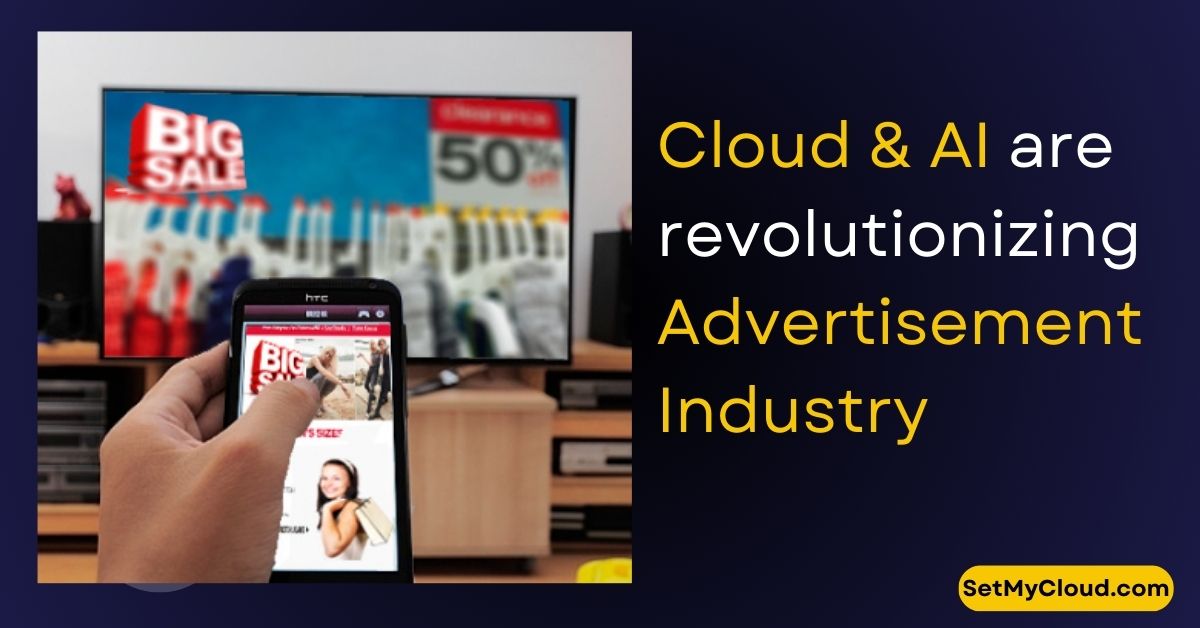Cloud computing and AI are revolutionizing the advertisement industry by enhancing efficiency, personalization, and scalability. Here’s how they are transforming the landscape:
1. Data-Driven Insights
- Cloud allows advertisers to store and process massive amounts of data on consumer behavior in real-time. This data can be accessed across teams and geographies, providing deeper insights into market trends, customer preferences, and campaign performance.
- AI algorithms analyze this data to make sense of patterns, predicting customer behaviors, and generating recommendations for more effective targeting.
2. Personalization at Scale
- Cloud platforms offer scalable infrastructure to run AI models that analyze customer interactions across multiple channels (web, mobile, social media).
- AI personalizes ad content by learning user behavior and preferences, making ads more relevant and engaging. For instance, AI-driven recommendation systems (like those used by Google and Amazon) suggest personalized products, improving click-through and conversion rates.
3. Programmatic Advertising
- Cloud technology supports programmatic advertising, where AI algorithms automate the buying and selling of ad space in real-time. This ensures that ads are shown to the right audience at the right time.
- AI optimizes bids in real-time auctions (RTB – Real-Time Bidding), adjusting strategies based on performance data to maximize ROI.
4. Enhanced Creativity with AI Tools
- AI tools, such as Natural Language Processing (NLP) and image recognition, can help advertisers create more dynamic and relevant ad content. AI generates text, designs visuals, and even edits video content based on predefined criteria.
- Cloud supports the deployment of these AI-driven creative tools across advertising agencies, making collaborative, remote, and faster content creation possible.
5. Real-Time Analytics and Optimization
- Cloud-based analytics platforms allow advertisers to monitor the performance of campaigns in real time, enabling quick decision-making.
- AI tools can analyze these analytics in real-time, automatically tweaking campaigns for better engagement by adjusting spend, targeting, and content without human intervention.
6. Omnichannel Marketing Integration
- Cloud solutions unify data across multiple channels, ensuring that advertising campaigns are consistent across platforms (mobile, social media, TV, etc.).
- AI enables seamless integration by recognizing patterns in user behavior across different devices and channels, ensuring a cohesive and personalized customer experience.
7. Fraud Detection
- AI algorithms detect fraudulent activities such as click fraud in online ads. With cloud infrastructure, these models can continuously monitor and scale to safeguard against fraud in real-time, reducing wasted ad spend.
8. Predictive Analytics and Customer Journey Mapping
- AI models powered by the cloud can predict future trends and consumer behaviors based on historical data. This helps advertisers anticipate customer needs and adjust their marketing strategies proactively.
- Cloud infrastructure enables storing and analyzing large datasets to map out customer journeys more accurately, providing more strategic decision-making.
9. Lower Costs and Scalability
- Cloud reduces the need for on-premise infrastructure, lowering operational costs for advertisement agencies. It also enables quick scaling during large campaigns or peak times.
- AI-driven automations (like in content generation and media buying) reduce manual effort, making processes faster and more cost-effective.
10. Voice and Visual Search
- AI powers voice recognition and visual search technologies that are becoming increasingly popular. Advertisers are using this to optimize their campaigns for voice searches (like on smart speakers) and visual searches (like Google Lens), opening new ad formats.
- Cloud platforms handle the complex processing of these searches, delivering faster and more accurate results.
In summary, cloud computing provides the backbone for scalable infrastructure, while AI drives automation, personalization, and optimization, enabling the advertising industry to deliver smarter, data-driven campaigns.
Here are 5 examples of how Cloud and AI are transforming the advertisement industry:
1. Google Ads – AI-Driven Ad Bidding and Personalization
- Cloud powers Google’s ad infrastructure, processing enormous amounts of user data in real-time across the globe.
- AI optimizes bidding strategies in Google Ads through Smart Bidding, which automatically adjusts bids to maximize conversions based on real-time user signals (location, device, time of day). Google’s AI also personalizes ad content to show users the most relevant ads based on their search history and browsing behavior.
2. Amazon DSP – Programmatic Advertising
- Amazon’s Demand-Side Platform (DSP) uses cloud-based programmatic advertising to allow brands to purchase ad space programmatically across Amazon’s network and partner sites.
- AI analyzes consumer shopping patterns and browsing data to target ads precisely to the most relevant audience, adjusting bids in real-time to maximize ROI.
3. Spotify – Personalized Audio Ads
- Cloud infrastructure helps Spotify manage vast amounts of user data, including listening habits, playlists, and demographics.
- AI powers personalized audio ads, creating custom advertisements based on each listener’s preferences and behaviors. For example, Spotify can serve ads to users based on their music taste or listening times (like targeting morning commuters with specific brands).
4. Coca-Cola – AI-Enhanced Creative Ads
- Coca-Cola uses AI-driven creative tools hosted in the cloud to create dynamic ad content. During campaigns like the FIFA World Cup, they used AI to analyze real-time social media conversations and create customized ads that responded to trending topics.
- This AI-powered tool allowed them to produce highly personalized and timely video ads, increasing engagement by making content feel more relevant.
5. The Trade Desk – Real-Time Programmatic Ad Buying
- The Trade Desk uses cloud computing to support its programmatic ad-buying platform, processing millions of data points every second to enable real-time decision-making in ad auctions.
- AI algorithms optimize media buying by analyzing vast datasets, predicting the success of ad placements, and adjusting strategies in real-time to ensure the highest return on ad spend (ROAS).
